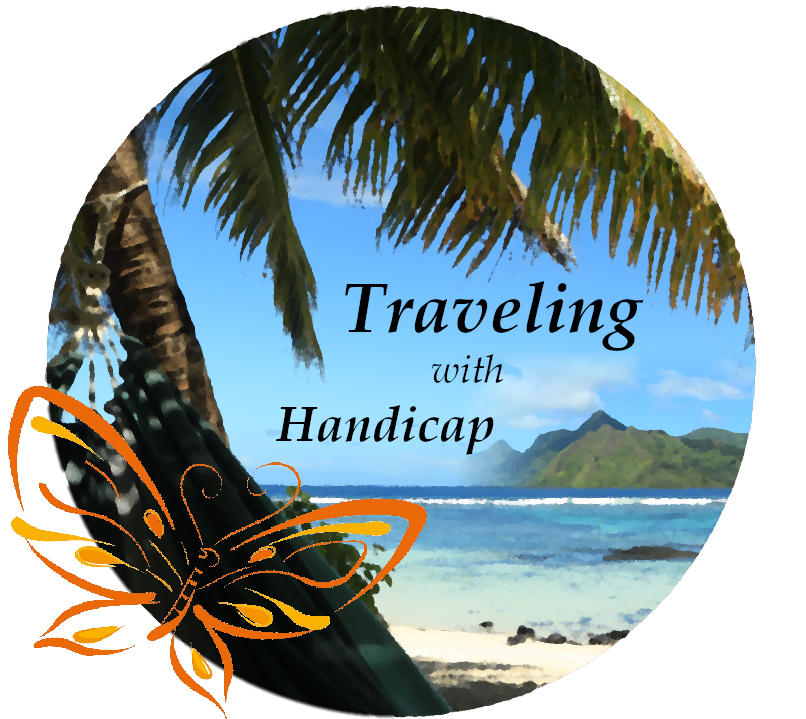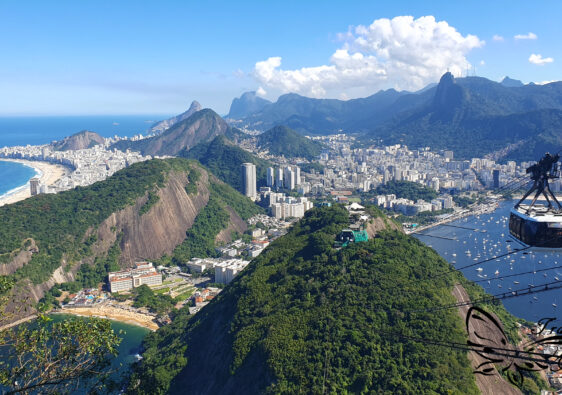The sun burns down stronger than the inflation.
Tour guide of free walking tour in Córdoba
I knew that after Central Chile (Valparaiso), my next stop would be Mendoza. To be more exact, I wanted to head towards Buenos Aires step by step. Firstly Mendoza, then Córdoba, then Buenos Aires. When I traveled the Carretera Austral in early January, I got to know a nice Argentinean family on the long ferry ride. They invited me to visit them in their home, close to Mendoza. Therefore, I took a bus from Valpo to Mendoza, stayed in the city(center) of Mendoza for approximately one day to check it out, and then stayed with the family.
Crossing the Andes – from Valpo to Mendoza
In order to get from the central coast of Chile to Mendoza, one has to cross the Andes. Literally, yes. Approximately one hour away from Valpo, the landscape seemed similar to the one around La Serena. I was really happy that I booked the 8 hours bus trip during daytime (there was another connection during the night). Otherwise, in the dark, I would have missed out on all the impressive colors of the mountains. Moreover, considering the serpentines, daylight seems to be safer.
The Chilean side
I tried to take pics from the bus, the not perfectly clean windows and the phone-software didn’t catch the pure range of colors. So it was far more impressive than it seems on my pictures. On Chilean side, there have been many little villages now and then. With plenty of palm trees, I even saw train tracks. Not sure though if they are still in use (maybe for industry purpose). These villages in tiny valleys of the Andes were indeed impressive, surrounded by really high mountains.
At one point, I recognized that we are driving more and more uphill. Sure, if you want to cross the Andes, without any ultra-long tunnels or a valley which is dividing the mountains into two individual parts, you need to drive over the mountains. After a while of more or less straight road with stunning views, serpentines (“Los Caracoles”) started. We went really slow, I didn’t see many cars, almost only trucks and maybe one or two other buses crossing our way. It was a really long way up, lucky I didn’t get car-sick. Nevertheless, I tried to catch the downhill view at every second curve.
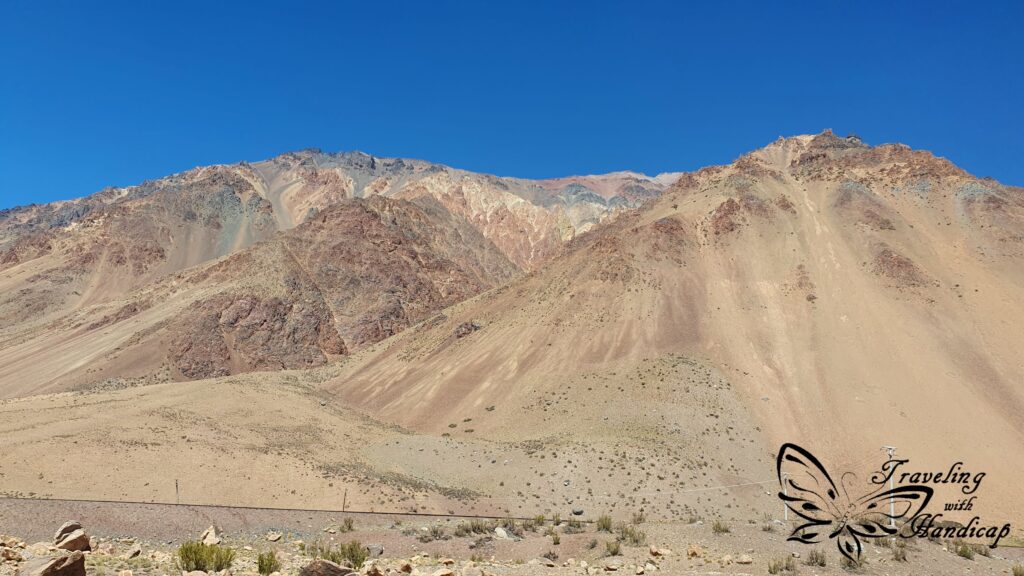
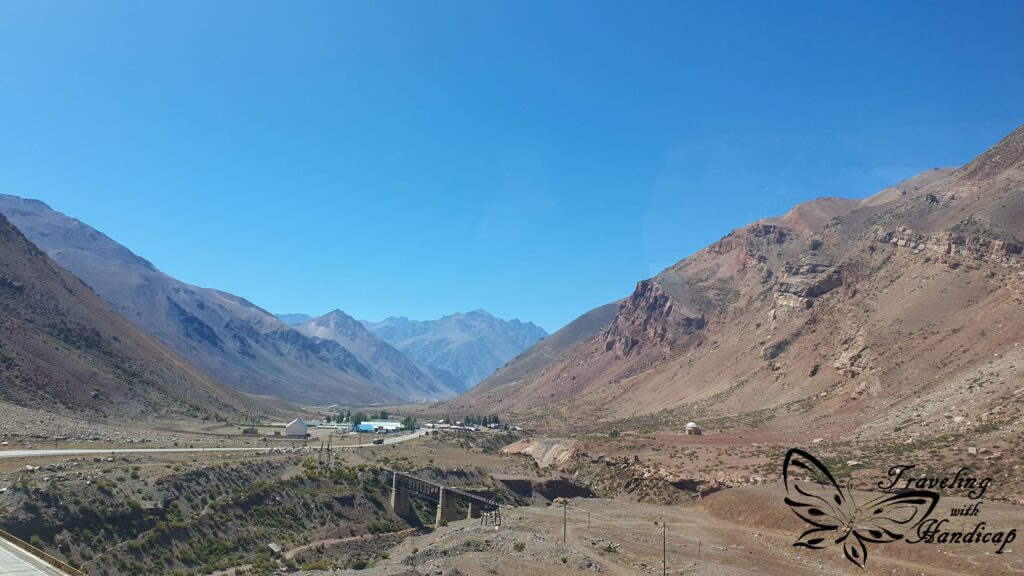
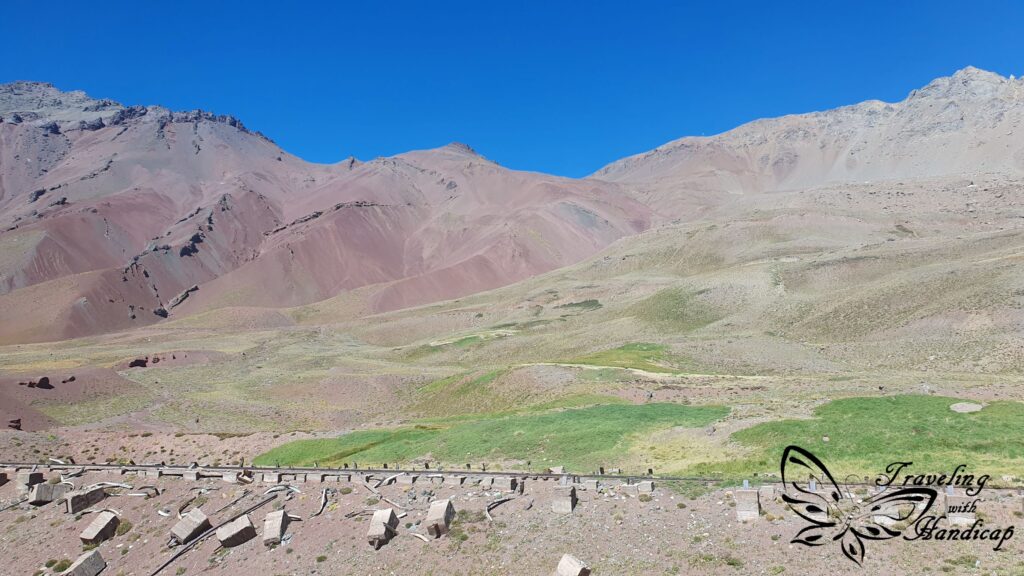
Very remote places
There were two parts of serpentines. At the end of the first and longer part, I recognized something which could have been a ski-lift once. It still had the rods available for the seats, though no seats. The area didn’t seem as if it is made for skiing, since the road covers the whole area. After the second part, almost at the border, there is the Laguna del Inca o del Portillo with a resort next to it. I assume if you want to stay there, you would better drive with your own car. I also recognized some signs for schools. If there are any, they are very remote.
If you drive yourself, and if you like many dirt-road serpentines, you might do a side trip border-crossing. You could visit the famous Christ the Redeemer of the Andes. Of course, the bus didn’t do these extra hours of driving. I assume that with a motorbike it would be a really great route to take. In my case, the bus went through a tunnel, the border was somewhere “in” the tunnel.
Border crossing
I have already done a couple of border crossings between Chile and Argentina, all within Patagonia (for Tierra del Fuego, the Carretera Austral and Bariloche). From this experience, I expected the Chilean emigration, then some driving and after, the Argentinean immigration. However, we didn’t stop at the Chilean side. I was a little worried that we would get into trouble, but the bus drivers should know what to do.
Actually, there are immigration buildings on both sides of the border. During the time when I crossed, the one in Argentina took care of both Chilean emigration and Argentinean immigration. Driving the opposite direction, the Chilean office would have taken care of both. However, the procedures might change occasionally. Therefore, if you’re driving, check before where you have to stop. This is because during high season weekends, you might have to wait at the border for 12 hours for your turn of passport control. The whole procedure only took us approximately 1 hour, very convenient.
The Argentinean side
Within Argentina, the road continued considerably straight. Still amazing colors of the mountains. When I looked out of the window, to the right, I recognized some mountains with snow on top. Later, I learned that this was Cerro del Plomo with its stunning altitude of 5.424 meters. If you are skilled in high altitude hiking, tracks around the Cerro del Plomo lead to different ancient Inca places.
The road followed the Rio Mendoza, until Potrerillos. The Potrerillos lake is an artificial lagoon which is a popular swimming destinations for people from Mendoza. From Potrerillos, it was not far to reach the many small towns south of Mendoza. My first impression was that this all seemed to be Mendoza. From the highway, I couldn’t recognize a border. Later, I recognized that there are individual centers of town and, moreover, more relaxed people south of Mendoza.
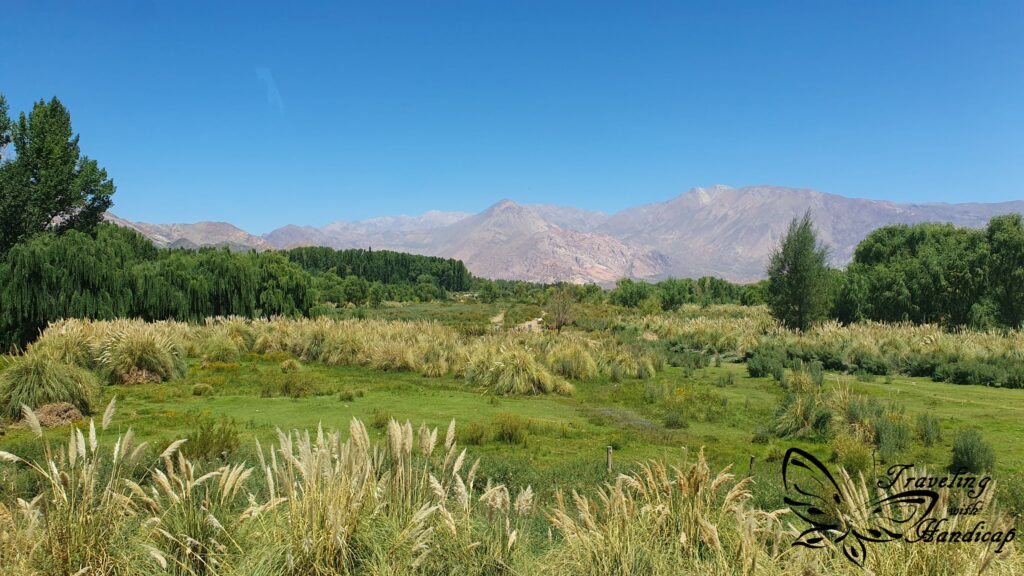
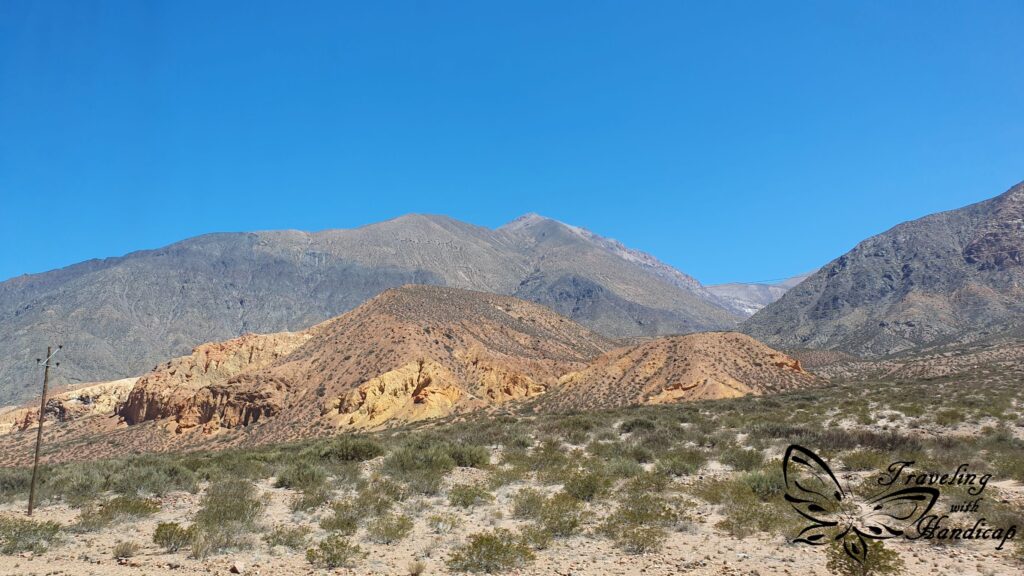

Mendoza
I have met many travelers who say they go to Mendoza because they love it. Honestly, if “Mendoza” is the town of Mendoza, one day is sufficient to check it out. It is also not too special, only very few nice streets to stroll along and a few plazas. What is indeed beautiful is the surrounding of the town of Mendoza. Both some towns connected to Mendoza and the province of Mendoza. The province is located within the so-called “Cuyo region” of Argentina, covering the provinces Mendoza, San Juan and San Luis.
The town Mendoza
My hostel was very close to both the bus station and the center, so convenient to walk around. Nevertheless, with my luggage, I preferred to take a minibus from the terminal to nearby the hostel. Conveniently, the SUBE card which I got for the minibuses in Bariloche also works in Mendoza. Within town, you don’t really need a bus, though. While I was walking, I recognized plenty of posters mentioning “Vendimia 2023”. I decided to stay a little longer than initially planned, to grasp something of this Vendimia Festival. What a coincidence, similar to the Bierfest in Valdivia, I didn’t plan my time in Mendoza accordingly. I just went there to accidentally fit my dates. 😀
I have to mention that my hostel experience in Mendoza was so different from the experience in Valpo. Super chilled with great people in Valpo versus some weird people in Mendoza. I had to be super careful regarding my belongings, another woman has been stolen her phone. Since it was very hot and the air-con didn’t work properly, I didn’t sleep well and went for private rooms with air-con for my next stops in Córdoba and Buenos Aires. Indeed, a very good decision considering the approximately 38 °C (which felt more like above 40 °C) during the days and 25 °C during the night.
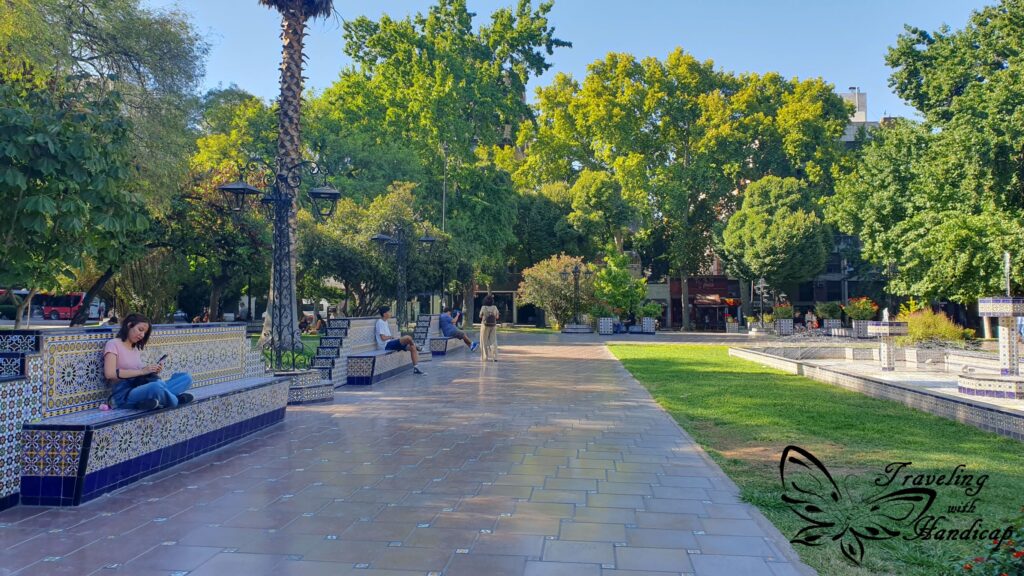
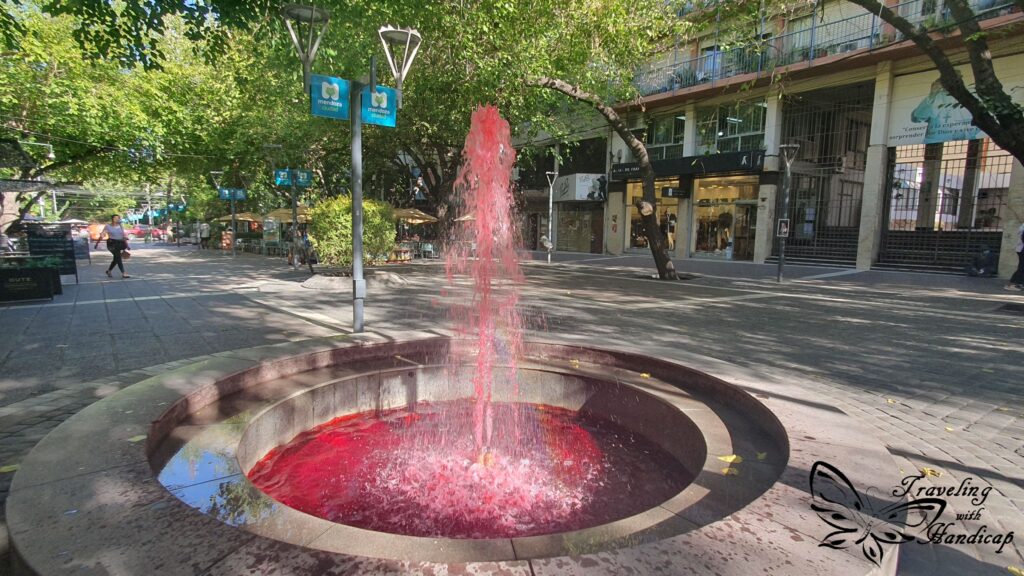
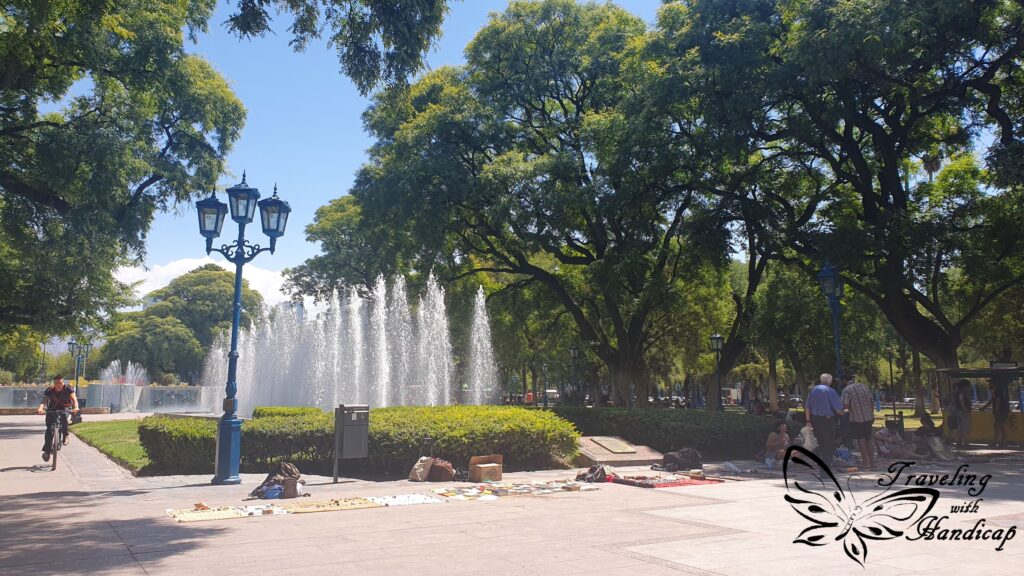
Vistalba & Chacras de Coria
After a day in Mendoza, I was invited to stay with a nice Argentinean family in the town of Chacras de Coria. Firstly, I recognized the temperature drop of 2-3 °C as soon as I left Mendoza (which felt like a lot more). Even though there are plenty of trees along the streets of Mendoza, the temperature is still lower on the “countryside”. The family lives within a private neighborhood. This reminded me of the private neighborhoods within Sri Lanka, which indeed serve the same purpose. If there is security checking people entering and leaving, you may live without latticed windows.
I had a really great time with them. I got to swim in their pool, which was absolutely refreshing. They also offered me great food and, moreover, a wine-tasting tour in the Bodega Trivento. The wines I tasted in this vineyard were softer than the ones I tried in Santa Cruz, Chile. I preferred the softer wines. We also went to Chacras de Coria, initially for some coffee.
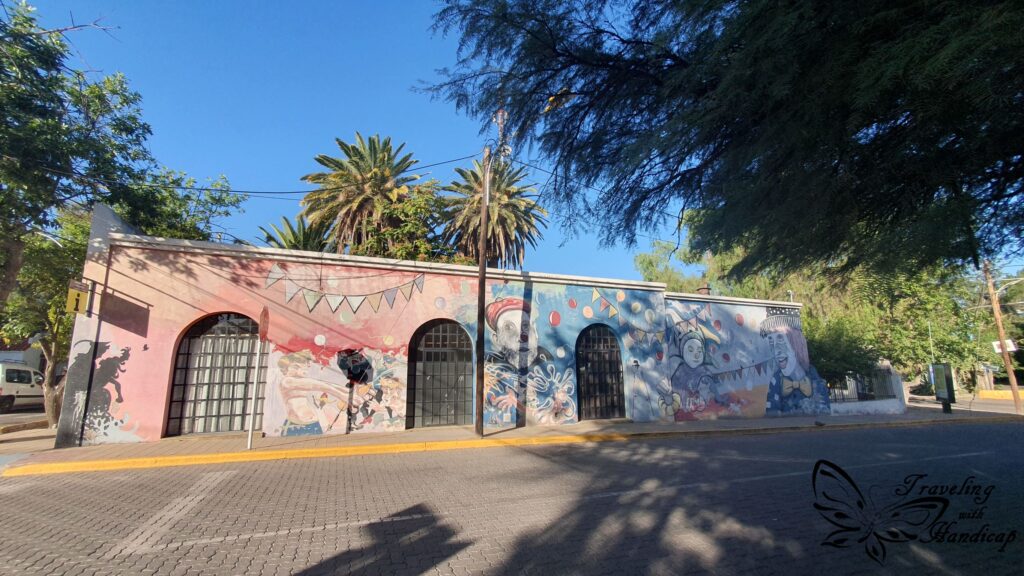
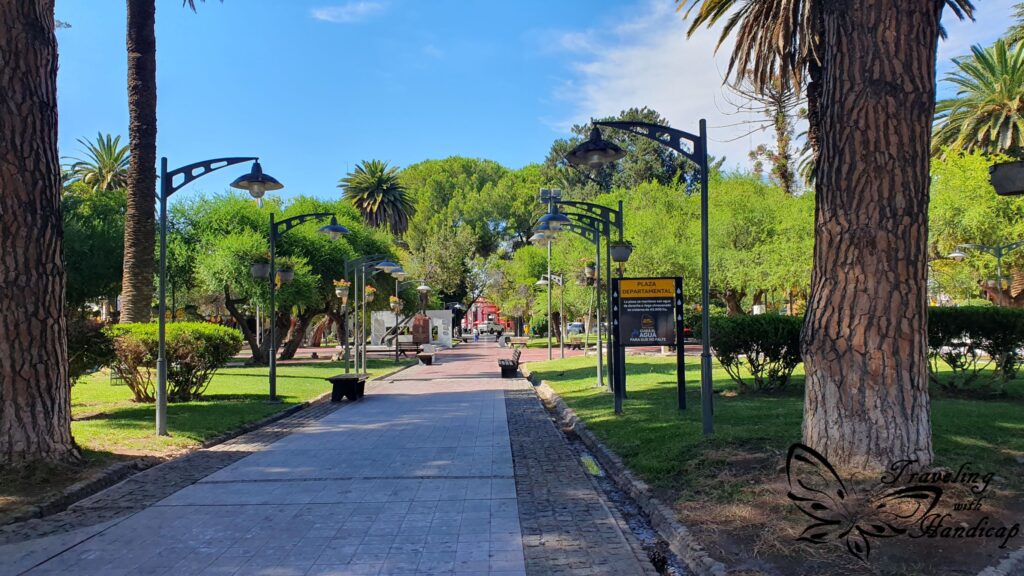
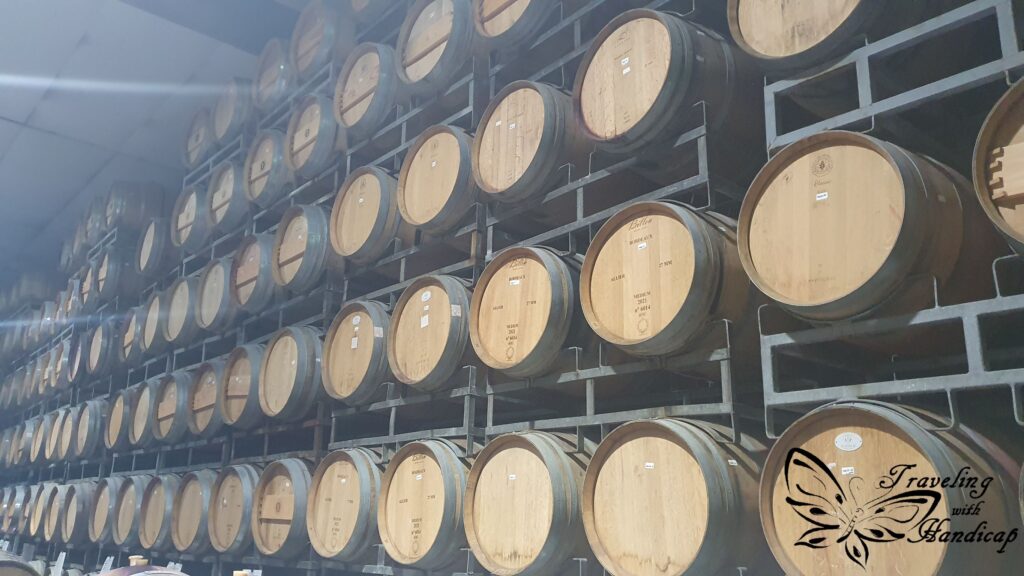
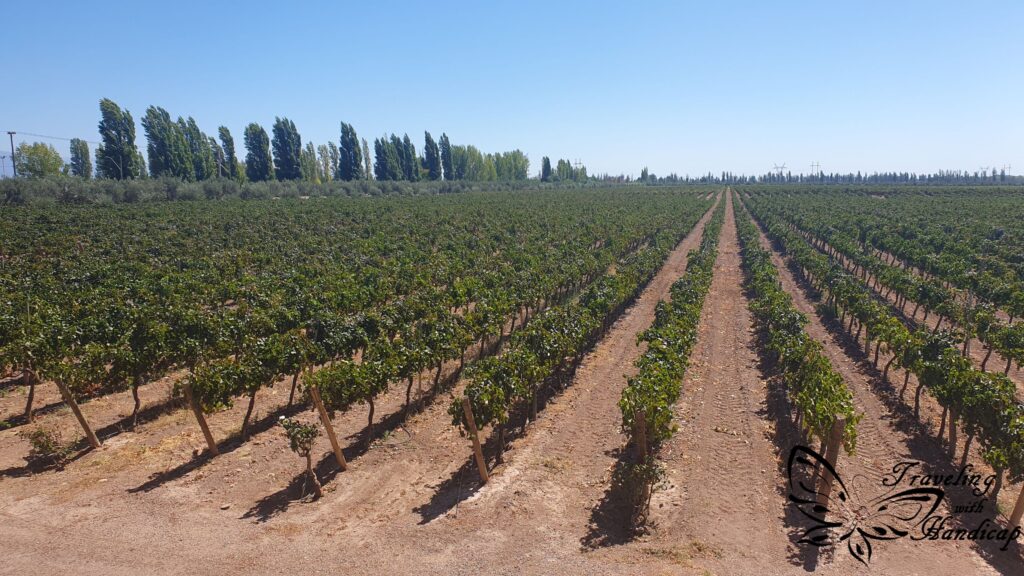
Electricity, where have you gone?
However, we experienced a power outage for several hours in the evening. Shops and restaurants even closed because they couldn’t offer anything. Even worse, with the high temperatures I mentioned, air-cons also didn’t work. We were not only affected in and around Mendoza, instead, even half or whole Argentina. Quite a strange experience and one of the very rare events that make it into German news.
Luján de Cuyo
In order to visit the parade of the Vendimia Festival, I stayed another night in a hotel in Luján. My guest family went on a weekend trip and I enjoyed another night of privacy. The reason I mention Luján separately is that it surprised me with respect to its accessibility. Indeed, Luján was the first town of those that I visited in Argentina, which really cared about the quality of ramps. Moreover, I saw many people with walking and seeing issues on the street, not begging but being accompanied by other people. A very positive experience. Moreover, Luján is a nice little town south of Mendoza with some good restaurants.
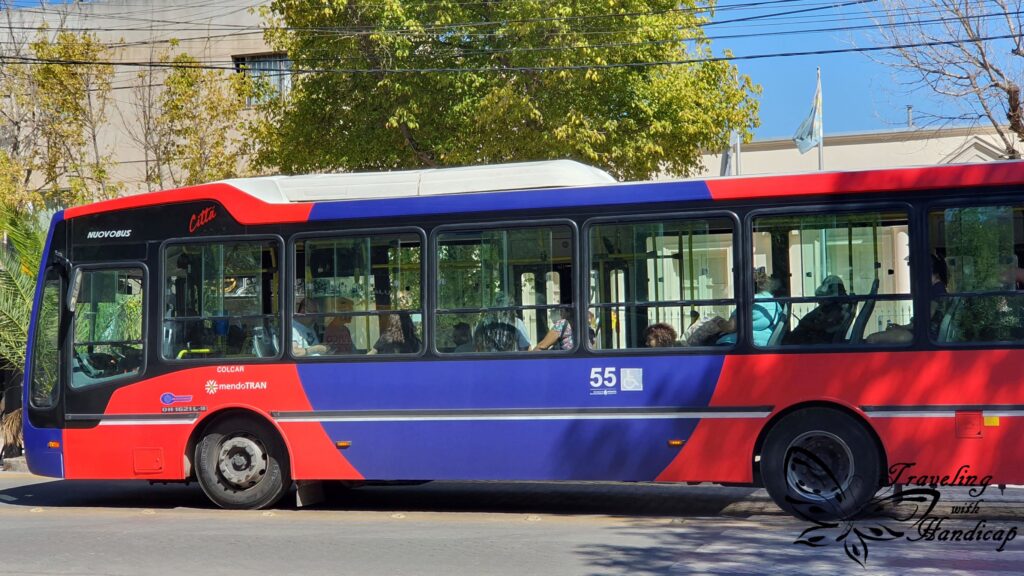
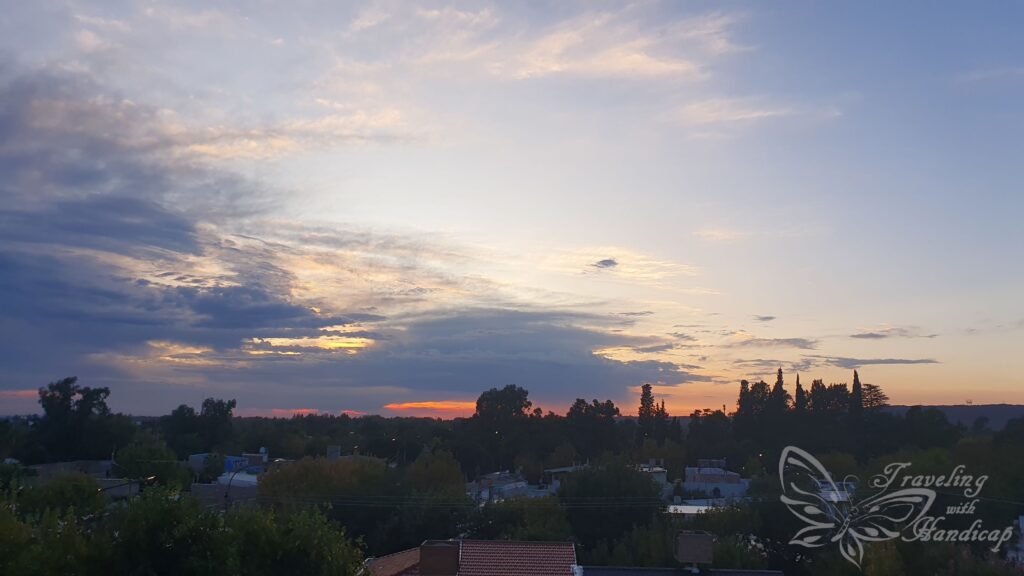
The Vendimia Festival
The region around Mendoza is very famous for its excellent wines. Approximately 70% of Argentinean wines are produced in this region. One of the famous types is the Malbec. Since the wines play such a big role for people in and around Mendoza, it makes perfect sense to celebrate the beginning of harvest season with a festival. Un canto a la naturaleza.
The festival lasts for a few days. On Friday night and Saturday noon there have been parades (Carrusels) in the center of Mendoza. I decided to watch the one on Saturday, since then I don’t have to take a bus all the way to Luján in the dark. The parade consisted of first a demo and then the true parade. Within the demo, people pointed to the corrupt Argentinean politicians who rather take the money than care for people and nature. Afterward, the parade consisted of many groups on horses representing the gaucho traditions. These groups were mixed with trucks presenting the queen of each region within the province of Mendoza as well as the overall queen.
The highlight of the Vendimia would have been an evening event, a mix of dance, musical, show. However, it was completely sold out online, so I didn’t stay for any further nights to maybe grasp a repeat of the show.



Córdoba
Creepy Córdoba
When I arrived in Córdoba in the morning (night-bus from Mendoza), there were not many people out on the street. I had breakfast at the bus station and then took a bus to the hostel. I expected to be able to use the SUBE card as in Bariloche or in Mendoza. However, Córdoba somehow needs to play its own game using its own card. I really appreciated having one and the same card for public transport in Argentina. Well, it seems as if Córdoba just needs to be different from Buenos Aires, no matter what…
When I arrived at the hostel, I have been told that I shouldn’t go out today. It was a Sunday, this means, everything was closed. This is why there were no people on the roads. Only in the morning, a few people were on their way to church, during the evening I shouldn’t expect anyone. The only people out would be homeless ones, the risk for robbing would be really high. Having an air-con in my private room of the hostel, I instead spent a relaxing day reading.
Beautiful Córdoba
On Monday, I had the opposite experience when I left the hostel. Plenty of people, all shops open, everyone seemed to be busy. I went to the Plaza San Martín in order to join a free walking tour and learn about the city. Córdoba inhabits above 1.7 mio people, it’s huge. I focused on the old and traditional center of Córdoba, which stands out by the architecture of the late Spanish colonization. During that time, people tried to build as they know it from Spain but include as much French style as possible, since France was the “elite” of Europe at that time.

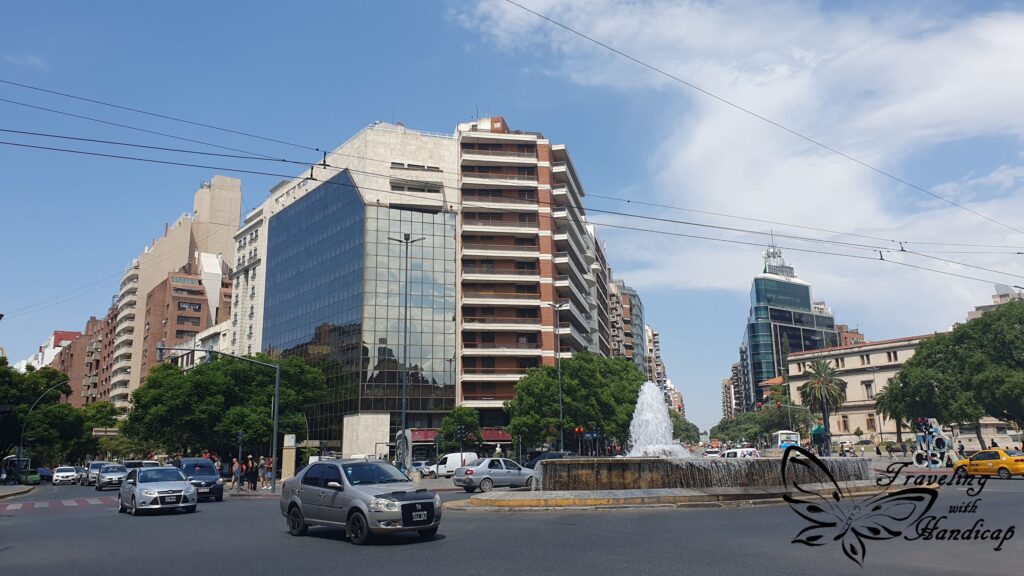
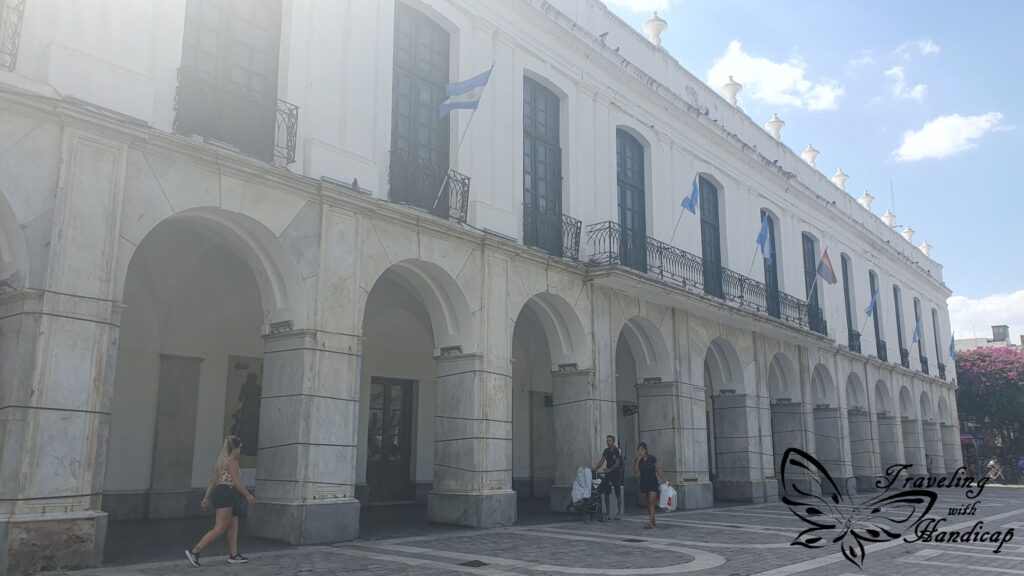
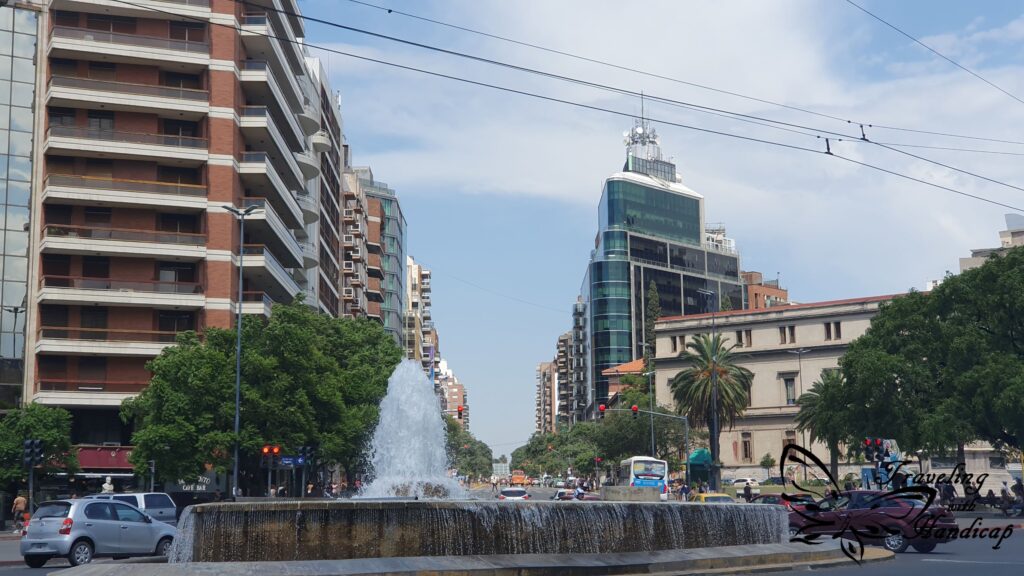


The old building of the Universidad Nacional de Córdoba is one of the oldest universities across whole South America. There are also some buildings and churches belonging to the Jesuits. Pope Francis lived in one of these Jesuit church & monastery complexes once. Apart from architecture and museums, Córdoba also offers Alfajores. These delicious sweets taste a little different at every place, though Córdoba is said to have the best and greatest variety. I liked the traditional ones with Dulche de leche.

Since Córdoba is huge, there are both nice and bad neighborhoods. “New Córdoba” would also be a good one, I didn’t do another free walking tour though, just took some photos. Instead, I spent my other day to travel to another place in the neighborhood of Córdoba.
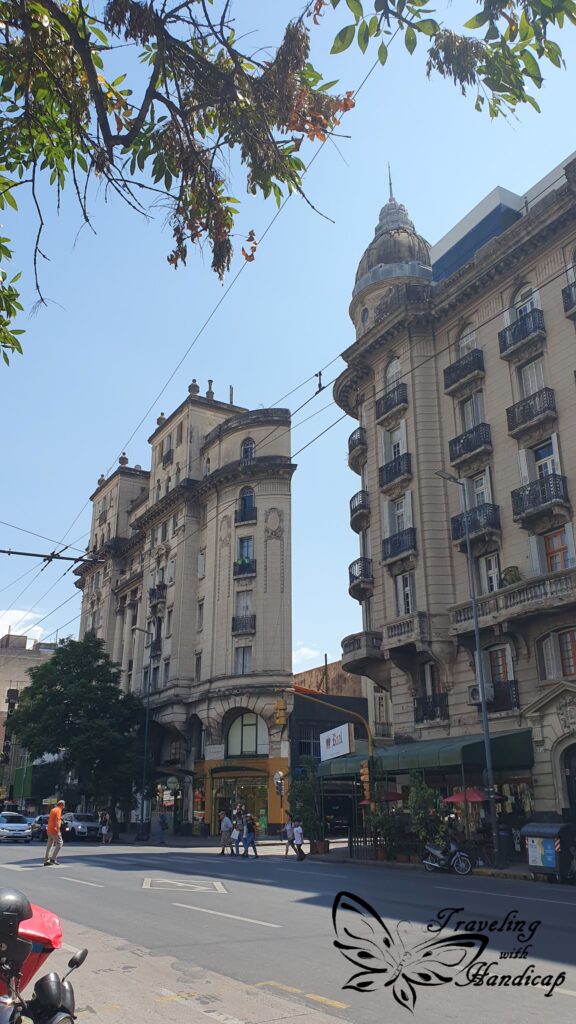
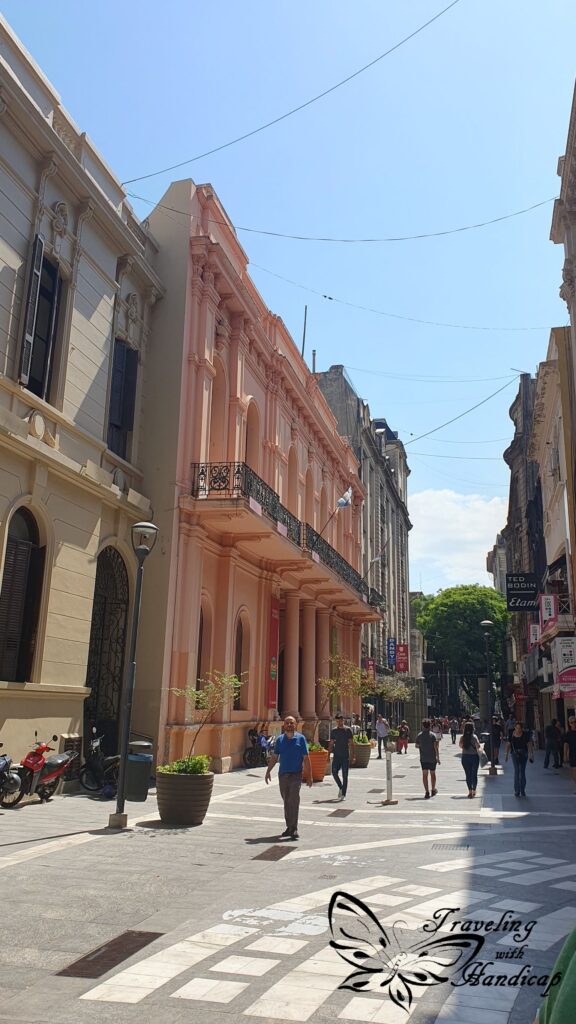
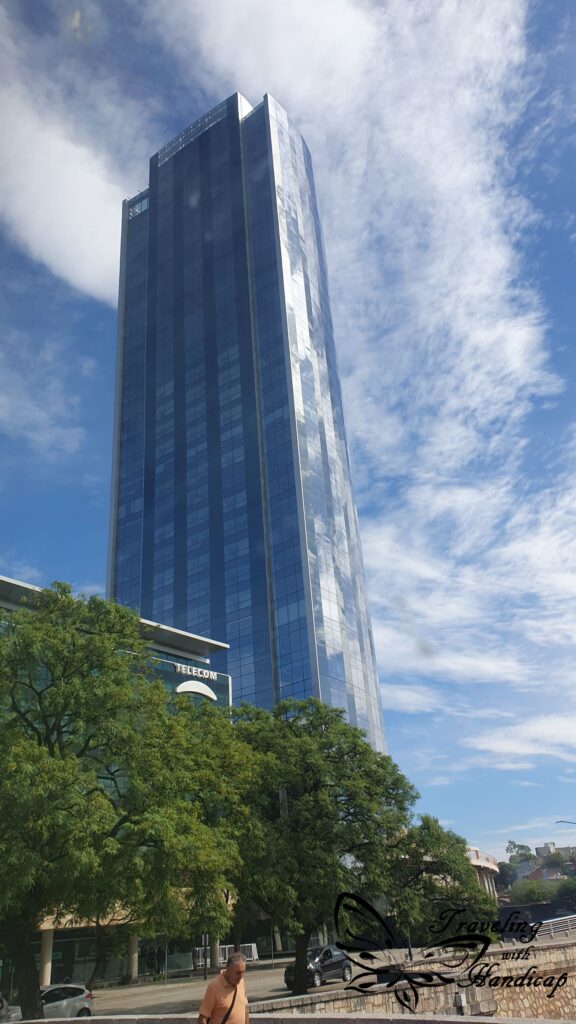
Villa Carlos Paz & Lago San Roque
If you visit Córdoba city and have a few spare days left, you should visit towns at the lakes around Córdoba. Since I wanted to do a one-day return trip, I picked Villa Carlos Paz at the Lago San Roque. The other lakes within the province are further away and – in my opinion – require a hotel nearby, as the bus from Córdoba takes too long for a return trip. From the bus terminal in Córdoba to Villa Carlos Paz terminal was a journey of approximately 1 hr.
Carlos Paz is a very peaceful town, people seem to be more chilled than in Córdoba. Similar to Mendoza and Vistalba, it was a few degrees colder, indeed very good. There are many villas around the lake, so I assume that richer people who can afford it live there instead of within busy Córdoba. A walkway follows more or less the shore of the lake, connecting restaurants with beaches and viewpoints. As the lake is embedded within a little mountain-range, it’s very scenic. One fun part though: there is a big cuckoo clock in town.



